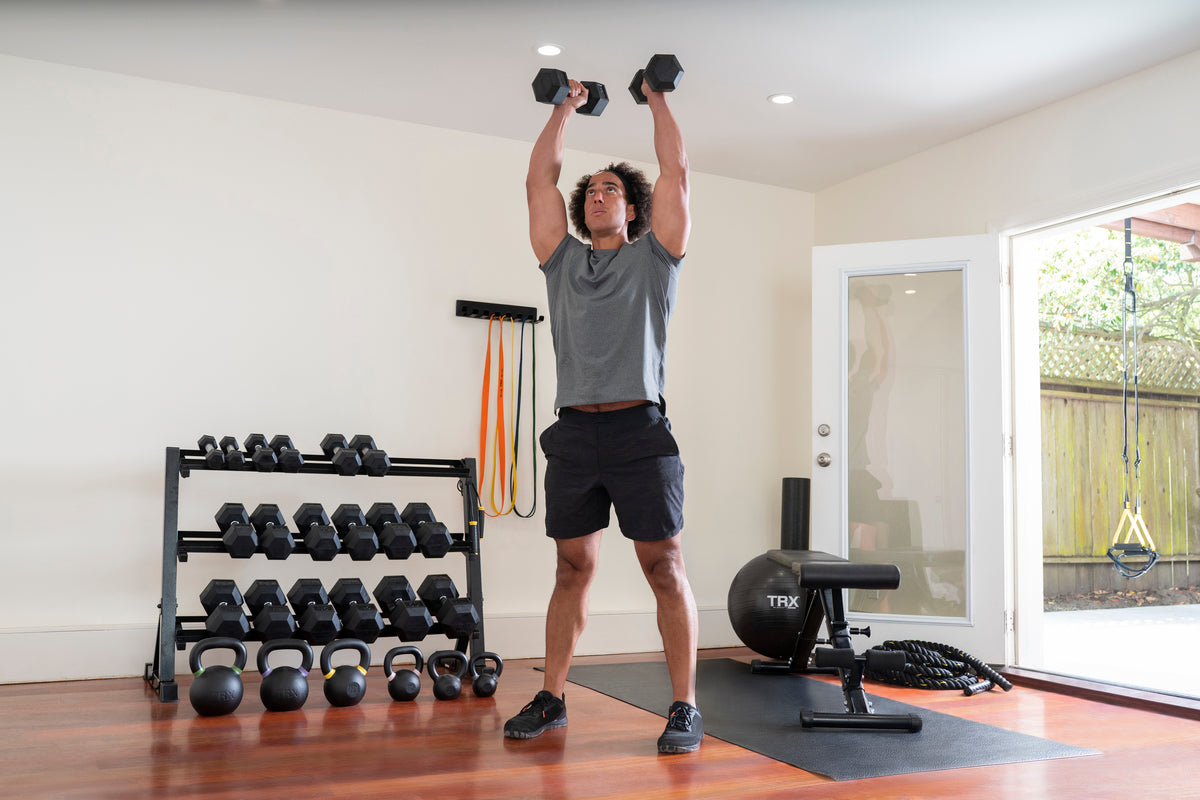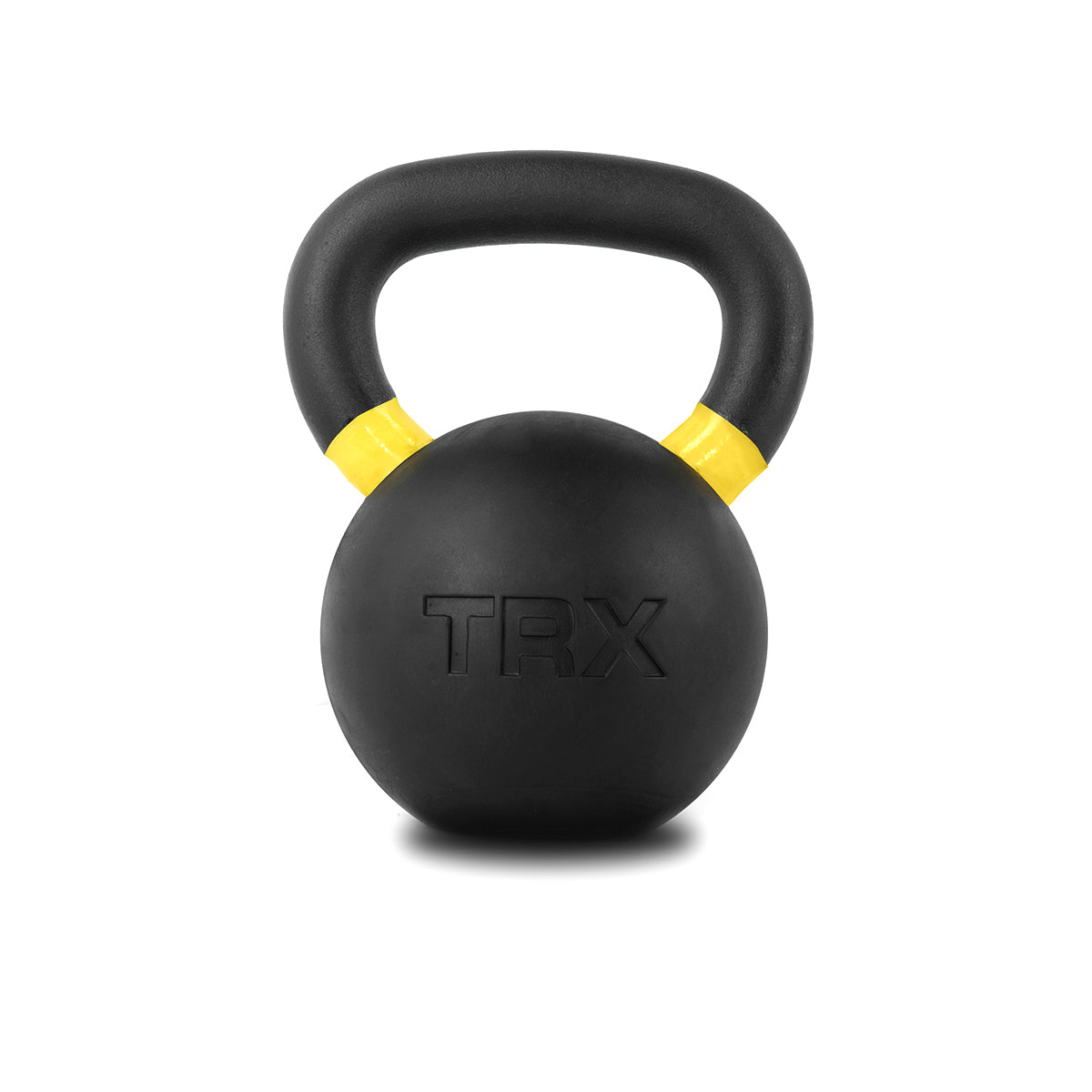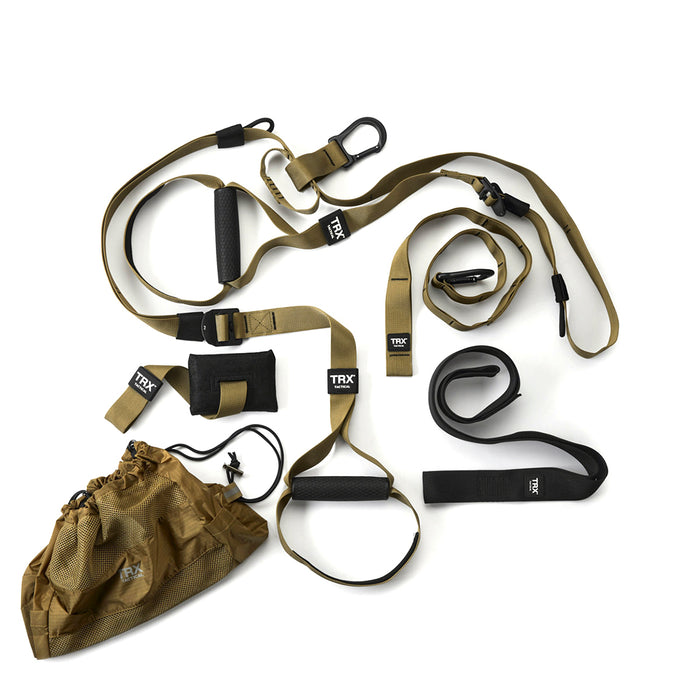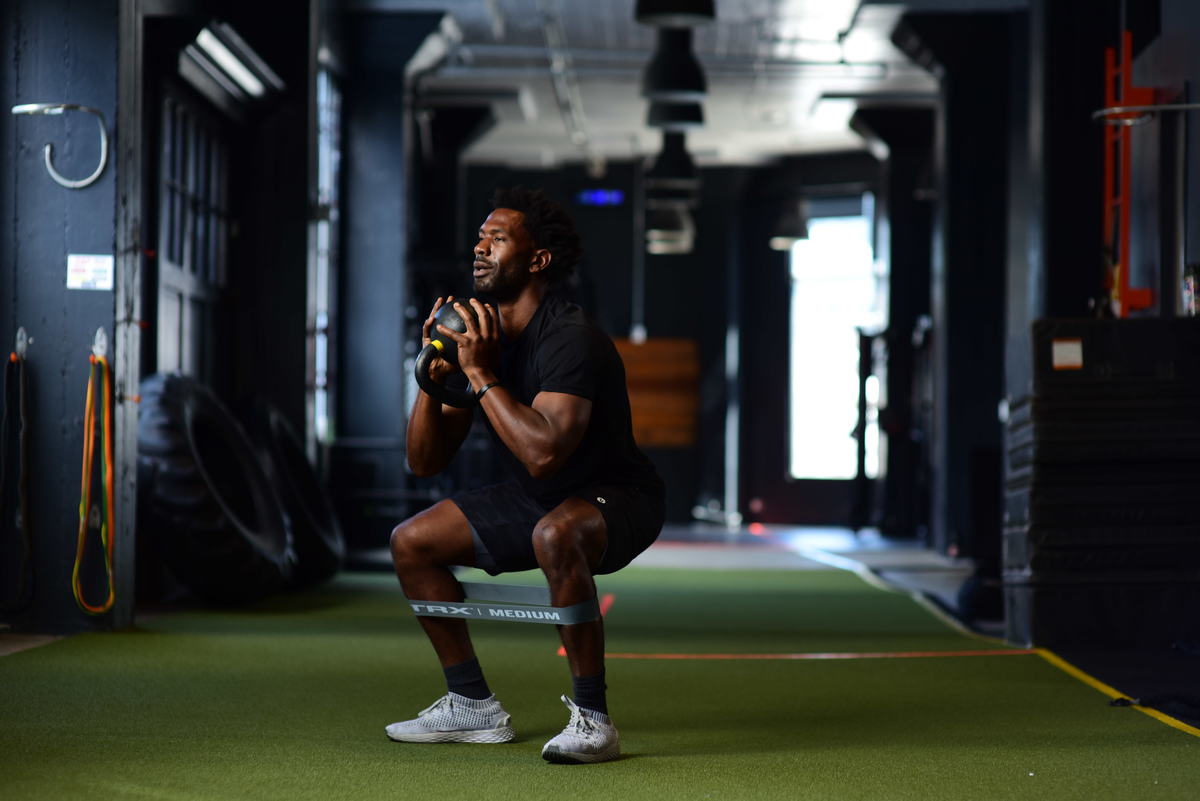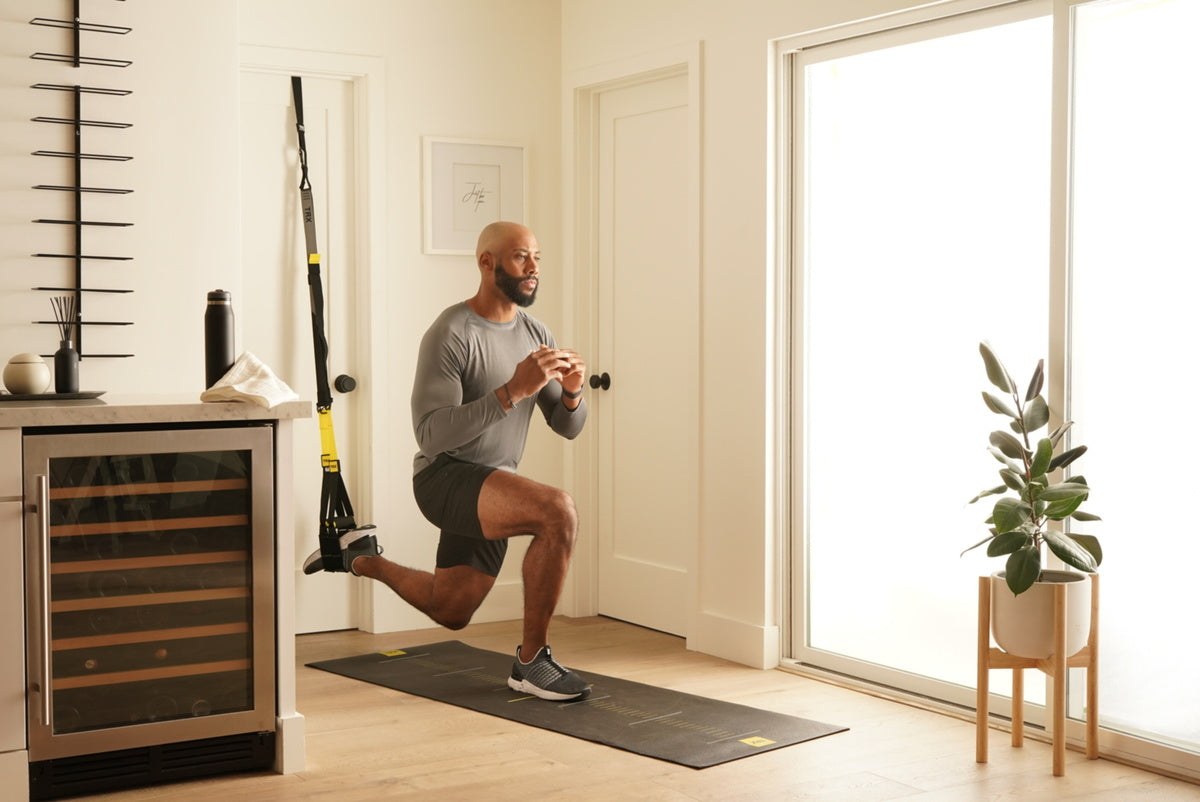A well-rounded push day routine not only carves out a great outer and inner chest, shoulder, and tricep muscles, but it also lays the foundation for functional strength that enhances your daily life. So, grab your workout gear, brace yourself for some exhilarating challenges, and let's embark on a push-day workout adventure that promises to leave you feeling stronger, more confident, and closer to your fitness goals than ever before. It's time to push your boundaries and redefine what you thought was possible—let's get started!
What is a Push Day?
In the realm of strength training, a Push Day is a designated workout session that revolves around exercises that primarily involve pushing movements. These movements are centered on pushing weight away from your body, engaging various muscle groups to build strength, muscle mass, and overall fitness. Push Days are part of a structured workout split, which is a strategic way to organize your training routine to optimize muscle recovery and growth.
During a Push Day, the spotlight is on the upper body muscle groups, the key players here include the chest, shoulders, and triceps. Let's break it down further:
Chest: The chest muscles, or pectorals, are engaged in exercises like bench press and push-ups. These movements target the horizontal pushing motion, helping to develop a strong and well-defined chest.
Shoulders: The deltoid muscles in your shoulders are activated during exercises like overhead presses and lateral raises. These movements work on your vertical pushing strength and contribute to those broad and strong shoulders you've been aiming for.
Triceps: The muscles on the back of your arms, the triceps, are involved in extending your arms during movements like push-ups, dips, and tricep presses. They are crucial for overall arm strength and definition.
Now, let's talk about the bigger picture. Incorporating different types of workout days, like Push Days, into your routine is essential for balanced progress. Workout splits are designed to prevent overtraining, promote recovery, and optimize muscle growth. Balancing push workouts with other days like Pull Days (for back and biceps) and Leg Days (targeting lower body muscles) helps in preventing muscle imbalances and reducing the risk of injuries.
A well-rounded fitness journey includes a variety of workouts targeting different muscle groups to ensure comprehensive development. Neglecting any particular muscle group can lead to uneven strength gains and potentially hinder your overall progress. So, whether you're aiming to boost your athletic performance, increase muscle size, or simply enhance your general fitness, embracing the concept of balanced workout splits, including those energizing Push Days, is a smart move on your fitness journey.
Remember, consistency, progressive overload, and a balanced approach to your training routine are the keys to achieving your fitness goals.
Muscles Targeted During a Push Workout
During a Push Day, the primary focus is on the muscles responsible for pressing motions. These muscles include the pectorals (chest), deltoids (shoulders), and triceps. By targeting these groups, you're not only building strength and size but also creating a balanced upper body aesthetic. Pushing movements are pivotal for developing upper body strength. Think about it: whether you're pushing open a heavy door or lifting a weight overhead, these actions engage the muscles we're targeting on Push Day. The strength you gain from these exercises translates into functional power for everyday activities and sports performance.
A well-structured Push Day routine combines both compound and isolation exercises to maximize results. Compound movements, such as the bench press and overhead press, involve multiple muscle groups working in harmony. They promote overall strength and stimulate the release of growth-inducing hormones. On the other hand, isolation exercises like tricep dips and lateral raises hone in on specific muscles, allowing you to fine-tune your development.
The magic of compound exercises lies in their efficiency—they provide a bang for your buck by engaging multiple muscles at once. This not only saves you time but also promotes balanced muscle growth. Meanwhile, isolation exercises offer the opportunity to target specific muscles with precision, helping you carve out well-defined contours and avoid muscular imbalances.
The Best Exercises for Push Day
Now, let's take a look at the best exercises for push day. Here's what you'll need to get started:
15. Dumbbell Bench Press
Elevate your push day routine with the increased range of motion available in the Dumbbell Bench Press - an exercise that brings versatility and targeted muscle engagement to the forefront. By focusing on your chest, shoulders, and triceps, this exercise offers a well-rounded upper-body challenge that can be tailored to your unique strength level.
- Lie flat on a bench, holding a dumbbell in each hand above your chest. Palms facing forwards
- Lower the dumbbells to the sides of your chest, keeping your elbows between a 45—60 degree angle.
- Allow your grip to turn in slightly as you lower the weights.
- Press the dumbbells back up to the starting position, engaging your chest, shoulders, and triceps.
- Keep your core engaged and maintain proper form throughout the movement.
Variations:
- Neutral Grip Dumbbell Bench Press: Rotate your wrists so that your palms face each other for a different angle of activation.
- Single-Arm Dumbbell Bench Press: Challenge stability and core engagement by performing the exercise one arm at a time.
14. Incline Bench Press
When it comes to conquering your upper chest, the Incline Bench Press takes center stage. By introducing an incline angle, you're not only adding variation to your push-day routine but also honing in on specific muscle fibers of the upper chest that contribute to a well-defined upper body. Incorporate it after your primary compound movements to further challenge your upper chest and add definition to your physique. Remember, balance is key, so pair the Incline Bench Press with other pushing exercises to create a comprehensive routine.
- Set an incline bench to an angle between 30 to 45 degrees.
- Lie on the bench with your feet flat on the floor, and grasp the barbell slightly wider than shoulder-width apart.
- Lower the barbell to your upper chest, keeping your elbows at a comfortable angle.
- Push the barbell back up to the starting position, focusing on engaging your upper chest, shoulders, and triceps.
- Maintain a stable core and controlled movements throughout.
Adjusting the Bench Angle:
- Lower angles (around 30 degrees) target the upper chest and front shoulders.
- Higher angles (around 45 degrees) emphasize the front shoulders and triceps engagement.
13. Chest Press
Unleash the full potential of your chest muscles with the Chest Press—an exercise that hones in on isolation and precision. Whether you opt for a machine or cables, the Chest Press allows you to sculpt your chest with targeted intensity. The difference between the bench press and chest press is that bench press is performed in a nonfixed range of motion utilizing free weights, chest press is performed in a fixed movement pattern using a machine. Adjust your hand positioning wider for a different angle of engagement. Bring your hands closer together to emphasize the triceps and inner chest. Perform the exercise with one arm at a time to challenge stability and core engagement.
Using a Machine:
- Adjust the seat and handles of the chest press machine to your comfort.
- Sit down, gripping the handles at chest height.
- Push the handles forward until your arms are extended, focusing on engaging your chest muscles.
- Slowly retract your arms, bringing the handles back to your chest.
Using Cables:
- Attach the cables to the desired height on the machine.
- Stand between the pulleys, holding a handle in each hand at chest level. Facing away from the machine
- Step forward, creating tension on the cables.
- Push the handles forward, extending your arms while contracting your chest.
- Control the cables as you bring them back to the starting position.
12. Overhead Press
This compound movement isn't just about lifting weights above your head; it's a symphony of muscle engagement that targets your shoulders, and triceps, and even engages your core for stability. The Overhead Press, often referred to as the "shoulder press," is a testament to your upper body prowess and an exercise that deserves a prominent spot in your push-focused routine. Start with a manageable weight and gradually increase the resistance as you build strength. This approach not only prevents plateauing but also ensures continuous improvement in your overhead pressing ability. Resist using momentum no matter which variation you choose.
Seated, this variation provides more stability and isolates the shoulder and tricep muscles.
- Sit on a bench with back support, holding a barbell or dumbbell at shoulder height.
- Push the weight upward, extending your arms fully while engaging your shoulders and triceps.
- Lower the weight back down to shoulder height with controlled movements.
Standing, this variation requires greater core engagement and activates stabilizing muscles throughout your body:
- Stand with your feet shoulder-width apart, holding a barbell or dumbbell at shoulder height.
- Press the weight overhead, extending your arms while engaging your core for stability.
- Lower the weight back down with control, returning to the starting position.
11. Lateral Raises
Isolating the lateral deltoids is the key to achieving those sought-after broad and defined shoulders that command attention. The transformative power of Lateral Raises lies in its ability to sculpt your upper body silhouette, creating a visually striking profile that exudes strength and confidence. By incorporating this exercise into your routine, you'll discover a new dimension of upper body aesthetics.
Proper form and controlled movement are paramount to reaping the full benefits of Lateral Raises. As you raise your arms to shoulder level, your lateral deltoids—the muscles responsible for shoulder width—should be engaged at the top of the movement. This isolation technique ensures that you're targeting the right muscles for optimal results. Avoid shrugging your shoulders or using momentum to lift the weights.
- Stand with a dumbbell in each hand, arms by your sides, palms facing your body.
- Raise your arms out to the sides until they reach shoulder level, keeping a slight bend in your elbows.
- Maintain control and engage your lateral deltoids at the top of the movement.
- Lower the weights back down with control to the starting position.
10. Chest Flyes
Unlike the conventional Chest Press and Bench Press, the Chest Fly focuses on a unique range of motion that targets your chest muscles in a distinct and effective manner. By spreading your wings with this exercise, you're adding a crucial dimension to your push-focused routine, enhancing muscle development, and creating a beautifully proportionate upper body.
When performing chest flyes, adhering to proper technique and form is essential for optimal results. Maintain a slight bend in your elbows throughout the movement to fully engage your chest muscles and avoid strain. Envision hugging a giant tree as you bring the dumbbells together, placing deliberate emphasis on chest contraction. Execute the exercise with a slow and controlled motion, steering clear of swinging or using momentum.
- Lie flat on a bench, gripping a dumbbell in each hand above your chest, palms facing inward.
- Initiate the movement by opening your arms in a wide arc, feeling a gentle stretch in your chest.
- Bring the dumbbells back together above your chest, focusing on engaging your chest muscles.
- Maintain controlled motions throughout, emphasizing both the stretch and contraction of your chest.
9. Close Grip Bench Press
The Close Grip Bench Press is all about channeling your energy into triceps engagement. By narrowing your grip on the barbell, you're directing the workload to these sometimes neglected muscles. Proper hand placement and grip width are paramount. Position your hands just slightly narrower than shoulder-width apart to ensure optimal activation. Maintaining a controlled descent and ascent of the barbell is key to fully engaging the triceps throughout the movement.
For those seeking alternative options, consider the Close Grip Dumbbell Press or the Close Grip Push-Up. These variations offer unique challenges that accommodate different fitness levels. For beginners, starting with bodyweight exercises like Close Grip Push-Ups can serve as a foundational step. Intermediate and advanced lifters can explore heavier weights with the Close Grip Bench Press or experiment with different hand placements to target different portions of the triceps.
- Lie on a bench with your back firmly supported, gripping the barbell with a close grip.
- Lower the barbell to your chest while keeping your elbows close to your body.
- Push the barbell back up to the starting position, fully engaging your triceps.
- Maintain control and avoid bouncing the barbell off your chest.
8. Dips
Dips are more than just a checkbox on your workout list; they're a dynamic compound movement that engages your chest, shoulders, and triceps in a distinct and powerful way, using your body weight as both a resistance and sculpting tool. Unlike other exercises, Dips uniquely challenge these muscles by incorporating vertical pressing, making them indispensable for balanced upper body development.
Progression is where the true transformation happens. If you're new to Dips, consider starting with assisted variations using a resistance band or a dip machine. As you build strength, graduate to bodyweight Dips. To take it up a notch, introduce weighted vests or belts to intensify the challenge. Keep in mind that impeccable form always takes precedence over the number of reps or added weight.
Using dip bars or parallel bars adds a layer of complexity and efficacy to the exercise. Ensure the bars are stable and positioned at a width that allows your elbows to move comfortably. Keep your core engaged, and focus on controlled movements throughout. Dips aren't just about going through the motions; they're about mastering your body's mechanics to yield optimal results while minimizing the risk of injury.
- Position yourself between dip bars or parallel bars, gripping them firmly with your hands.
- Lower your body by bending your elbows until your upper arms are parallel to the ground.
- Push yourself back up to the starting position, engaging your chest, shoulders, and triceps.
- Maintain control throughout the movement, avoiding locking out your elbows.
7. Dumbbell Shoulder Presses
Executing Dumbbell Shoulder Presses involves lifting weights overhead with precision. This compound movement engages not only your deltoids but also calls upon stabilizing muscles, enhancing shoulder stability over time thus sculpting a set of robust and resilient shoulders. Whether you choose to press the dumbbells alternately or simultaneously, each approach offers distinct benefits. Alternating presses ensure equal workload distribution, promoting balance between the left and right sides of your body. Simultaneous presses, on the other hand, allow for greater focus on overall muscle engagement and coordination.
Incorporating Dumbbell Shoulder Presses into your push-day routine is akin to laying a strong foundation for upper body strength. This exercise complements other pushing movements, such as bench presses and push-ups, fostering comprehensive muscle development. Whether you're aiming for aesthetic gains or functional strength, Dumbbell Shoulder Presses serve as a versatile tool that belongs in every lifter's toolkit.
- Sit on a bench with back support, holding a dumbbell in each hand at shoulder height.
- Press the dumbbells overhead, extending your arms while engaging your shoulder muscles.
- Lower the dumbbells back down to shoulder height with control.
- Maintain proper form and focus on a steady, controlled motion throughout the exercise.
6. Seated Triceps Extensions
Seated triceps extensions are a prime example of zeroing in on specific muscle groups. By isolating the triceps, you're fostering focused strength and muscle development that translates to a well-defined, chiseled upper arm appearance. Executing the exercise correctly involves maintaining proper seated posture and avoiding excessive strain on your joints. Engaging your core stabilizes your body, allowing the triceps to be the prime movers.
The versatility of seated triceps extensions extends to the equipment you choose—dumbbells or a barbell. Opting for dumbbells can provide an enhanced range of motion and the opportunity to work on each arm individually. A barbell, on the other hand, allows for a balanced bilateral movement that may facilitate heavier lifts. By experimenting with both options, you're tapping into different angles of triceps activation and maximizing the exercise's benefits.
- Sit on a bench, holding a dumbbell or a barbell with an overhand grip.
- Extend your arms overhead, keeping your elbows close to your head.
- Bend your elbows, lowering the weight behind your head.
- Extend your arms back to the starting position, engaging your triceps.
- Maintain proper seated posture and controlled motions throughout the exercise.
- Avoid excessive arching of the back. This could indicate limited shoulder range which should be addressed
5. Skullcrushers
The essence of skullcrushers lies in their precision—directly targeting the triceps for maximum muscle activation. This exercise emphasizes controlled movement and form to avoid unnecessary strain. Opting for either lying or seated variations offers versatility in muscle recruitment, allowing you to cater to your preferences and unique physiological responses. Whether you're lying on a bench or seated, the core principle remains the same: isolate and engage the triceps with deliberate motion.
The subtleties of skullcrushers extend to adjusting the angle and grip. Altering the angle at which you perform the exercise can shift the emphasis from the long to the lateral head of the triceps, adding dimension to your muscle development. Experimenting with different grips—such as an overhand grip or an EZ-curl bar—alters the movement mechanics, providing you with opportunities to fine-tune your execution for optimal results.
- Lie on a bench or sit upright, holding a barbell or dumbbell above your chest with an overhand grip.
- Lower the weight toward your forehead by bending your elbows, ensuring your upper arms remain stationary.
- Extend your arms back to the starting position, engaging your triceps.
- Maintain control and avoid locking out your elbows.
4. Triceps Pushdowns
The essence of triceps pushdowns revolves around isolating and engaging the triceps muscle group with precision. The cable's dynamic resistance provides a constant tension that challenges your muscles throughout the range of motion. Different variations, such as using a straight bar, V-bar, or rope attachment, alter the grip and movement mechanics, leading to distinct muscle activation patterns. By experimenting with these options, you're customizing your workout to target specific triceps heads and ensure comprehensive development.
Setting up the cable apparatus correctly is essential for effective triceps pushdowns. Position the cable pulley at the top of the machine, and choose an appropriate weight. The cable should be positioned at a height that allows your hands to move freely. As you execute the movement, focus on maintaining a stable core and proper posture. This, combined with controlled, deliberate motion, ensures that your triceps are doing the work without unnecessary strain on other muscle groups.
- Attach a straight bar, V-bar, or rope attachment to the high pulley of a cable machine.
- Stand facing the machine and grasp the attachment with an overhand grip.
- Position your elbows close to your sides and extend your arms downward, engaging your triceps.
- Pause briefly at the bottom of the movement, then slowly return to the starting position.
- Maintain proper posture, core stability, and controlled motions throughout the exercise.
3. Push-ups
At the core of push-ups lies a straightforward yet powerful concept—using your own body weight as resistance to build strength and muscle. This fundamental exercise engages not only your chest, shoulders, and triceps but also requires stabilization from your core and upper back muscles. Variations like diamond push-ups emphasize triceps engagement, while decline push-ups shift the focus to your upper chest and shoulders. By incorporating these variations, you're adding layers of complexity to your workout routine and maximizing muscle recruitment.
Push-ups offer the flexibility to adapt to various fitness levels and goals. For beginners, starting with modified push-up variations, such as knee push-ups, lays a solid foundation. As you progress, standard push-ups become a staple, and eventually, you can explore more advanced variations. Incorporating push-ups into your push-day routine complements other exercises, creating a comprehensive workout that targets different aspects of upper body strength and aesthetics.
- Start in a high plank position with your hands placed slightly wider than shoulder-width apart.
- Lower your body by bending your elbows until your chest is close to the ground.
- Push yourself back up to the starting position, engaging your chest, shoulders, and triceps.
- Maintain a straight line from head to heels throughout the movement.
- Focus on controlled motions and a full range of motion for optimal results.
2. Dumbbell Front Raises
The essence of dumbbell front raises lies in their ability to singularly engage the front deltoid muscles. By lifting the dumbbells forward, you're emphasizing the anterior aspect of your shoulders, contributing to their definition and strength. While executing this movement, maintaining proper form is crucial. Avoiding excessive momentum and focusing on controlled motion ensures that the targeted muscles—your front deltoids—bear the brunt of the work, promoting optimal muscle activation.
To execute dumbbell front raises with precision, start with a neutral grip, holding the dumbbells by your thighs. As you lift the weights forward, maintain a slight bend in your elbows and a controlled tempo. Keep your core engaged and your back straight to prevent any strain on your lower back. This meticulous attention to form safeguards your shoulders and maximizes the effectiveness of the exercise.
- Stand with a dumbbell in each hand, arms fully extended by your sides, and palms facing your thighs.
- Keeping a slight bend in your elbows, lift the dumbbells forward until they reach shoulder level.
- Pause briefly at the top, feeling the contraction in your front deltoids.
- Lower the dumbbells back down to the starting position with controlled motion.
- Maintain proper posture and alignment throughout the exercise for optimal results.
1. French Curl
The French curl—also known as the lying triceps extension—takes the spotlight in targeting the triceps muscles with precision. This exercise requires you to maintain a controlled tempo and isolate the triceps as you extend the weights above your head. The distinct advantage of this movement is its ability to put your triceps in the driver's seat while minimizing the involvement of other muscle groups.
When choosing equipment for French curls, both the EZ bar and dumbbells offer their advantages. The EZ bar's unique shape reduces wrist strain, making it a popular choice. Dumbbells, on the other hand, allow for more independent arm movement, which can enhance muscle activation and offer variety to your routine.
Progression in the French curl comes through gradual resistance increase. Start with a weight that allows you to maintain proper form and control. As your triceps strength improves, gradually increase the resistance while ensuring that you can maintain the exercise's precision and controlled movement.
- Lie on a bench with your head at the edge, holding an EZ bar or dumbbell above your head with an overhand grip.
- Lower the weight behind your head by bending your elbows, and keeping your upper arms stationary.
- Extend your arms back to the starting position, engaging your triceps.
- Maintain a stable core and controlled motions throughout the exercise.
Try This Push Day Workout
Warm-Up: 5-10 minutes of dynamic upper body stretches.
Dumbbell Bench Press:
Set: 4
Reps: 8-10
Rest: 2 minutes
Incline Bench Press:
Set: 3
Reps: 10-12
Rest: 90s - 2 minutes
Chest Press:
Set: 3
Reps: 12-15
Rest: 60-90 seconds
Overhead Press:
Set: 4
Reps: 6-8
Rest: 90 seconds
Lateral Raises:
Set: 3
Reps: 12-15
Rest: 60 seconds
Chest Flyes:
Set: 3
Reps: 10-12
Rest: 60 seconds
Close Grip Bench Press:
Set: 4
Reps: 8-10
Rest: 60-90 seconds
Dips:
Set: 3
Reps: 10-12
Rest: 60 seconds
Dumbbell Shoulder Presses:
Set: 4
Reps: 6-8
Rest: 90 seconds
Seated Triceps Extensions:
Set: 3
Reps: 12-15
Rest: 6-90 seconds
Skullcrushers:
Set: 3
Reps: 10-12
Rest: 60 seconds
Triceps Pushdowns:
Set: 3
Reps: 12-15
Rest: 60 seconds
Pushups:
Set: 4
Reps: 8-10
Rest: 60-90 seconds
Dumbbell Front Raises:
Set: 3
Reps: 12-15
Rest: 45-60 seconds
French Curl:
Set: 3
Reps: 10-12
Rest: 60 seconds
Cool Down: 5-10 minutes of static stretching and deep breathing.
For more workouts like the one above, try the TRX Training Club app!

This comprehensive push-day workout is designed to challenge and stimulate your upper body muscles while also considering the importance of adequate rest between sets. Remember to maintain proper form and gradually increase weight as you progress. Adjust the workout intensity based on your fitness level and goals. Always prioritize safety and listen to your body.
Tips for Maximizing Your Push Day Workout
Push day workouts are a gateway to achieving a stronger, more sculpted upper body. To ensure you get the most out of your training, consider these practical tips that optimize performance and results:
1. Prioritize a Comprehensive Warm-Up:
Begin your session with 5-10 minutes of dynamic stretch to increase blood flow and elevate your body temperature. Focusing on exercises that target your shoulders, chest, and triceps such as arm swings, shoulder rolls, and cat/cows. Warming up primes your muscles for action and reduces the risk of injury.
2. Embrace Proper Form:
Maintaining proper form throughout your exercises is paramount. This ensures you're targeting the right muscle groups, prevents injury, and promotes effective muscle activation. Start with lighter weights if needed and gradually increase as your form improves. Avoid momentum and focus on your mind-muscle connection to prevent other muscle groups taking over
3. Gradually Increase Resistance:
Progressive overload is key to building strength and muscle. Gradually increase the weight you lift as your body adapts to the workload. Strive for the optimal rep range for your goals—lower reps for strength and higher reps for hypertrophy.
4. Include Compound and Isolation Movements:
Balancing compound and isolation exercises offers a well-rounded workout. Begin with compound movements like bench press and overhead press to engage multiple muscle groups. Follow these with isolation exercises that hone in on specific areas for targeted development.
5. Mind Your Breathing:
Proper breathing supports your efforts. Exhale during the exertion phase of the exercise and inhale during the relaxation phase. This rhythm helps stabilize your core and provides better oxygen flow to working muscles.
6. Integrate Variation and Progression:
Keep your routine dynamic by incorporating variations of exercises—change grip widths, angles, or equipment. Additionally, progressively challenge yourself by adding sets, reps, or weights over time.
7. Don't Skimp on Rest and Recovery:
Rest intervals between sets allow your muscles to recover partially before the next effort. Optimal rest times vary depending on your goals and exercise intensity. Listen to your body and give it the time it needs.
8. Implement a Thorough Cool-Down:
Post-workout, cool down with 5-10 minutes of static stretching. Focus on the muscle groups you've trained to help with flexibility and relaxation. Deep breathing during stretching enhances recovery.
9. Avoid Common Mistakes:
Common mistakes during push workouts include using excessive momentum, neglecting the proper range of motion, and lifting too heavy too soon. To avoid these, prioritize controlled motions, maintain full range of motion, and gradually progress your weights.
10. Stay Hydrated and Nourished:
Adequate hydration fuels your performance and aids in recovery. Alongside proper hydration, ensure you're nourishing your body with balanced nutrition to support muscle growth and overall well-being.
By incorporating these tips into your push-day routine, you'll be on the path to optimizing your performance, minimizing risk, and achieving the results you strive for. Remember, consistency is key—efforts over time lead to lasting progress.

